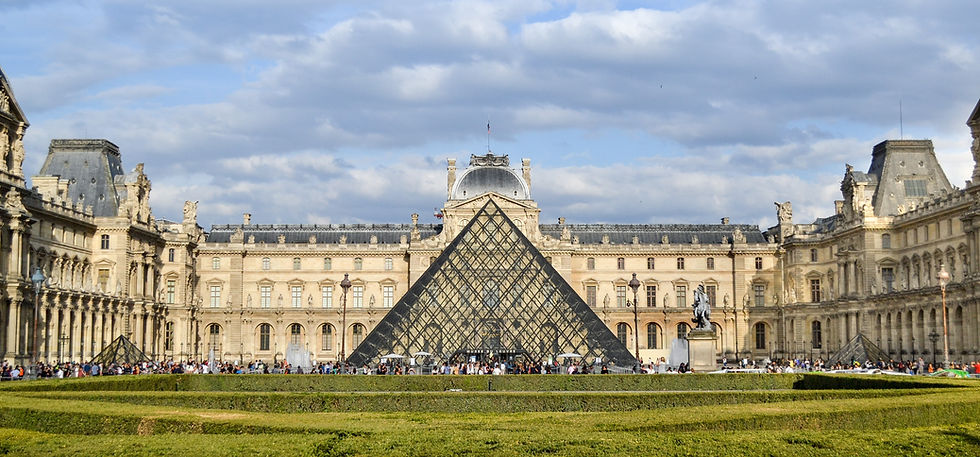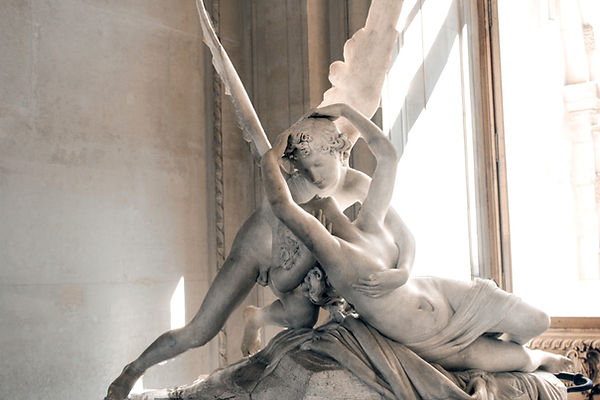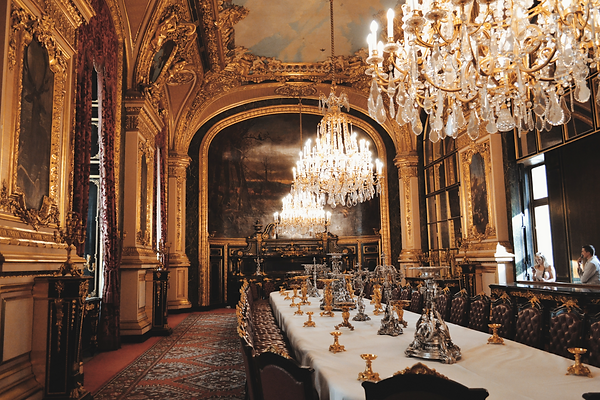
louvre museum

the history of the louvre
The Louvre is an emblem of our collective human heritage, a repository of some of the world's most precious artworks, artifacts, and historical treasures. Spanning an impressive 782,910 square feet, the Louvre stands not just as the largest art museum in the world but also as a testament to our enduring human capacity to create, appreciate, and preserve beauty.
The Early History of the Louvre
The history of the Louvre stretches back to the medieval era. Its origins can be traced to the 12th century, when Philippe Auguste, King of France, commissioned the building of a fortress on the right bank of the River Seine to safeguard Paris from Viking raids. This fortress, known as the Louvre, featured a central keep and a protective moat.
Throughout the centuries, the Louvre morphed under the hands of various monarchs, becoming far more than a simple military fortress. King Charles V transformed it into a royal palace during his reign in the 14th century. The growth continued into the 16th century under François I, who began to amass a collection of artworks and antiquities within its walls, symbolizing the monarch's wealth and refined taste. This tradition continued with Louis XIV, who added extensively to the royal collection, contributing significantly to the basis of the museum's expansive collection today.
Despite the royal association, the French Revolution marked a pivotal moment in the history of the Louvre. It was converted into a public museum in 1793 following a decree from the Revolutionary government. The transformation of the Louvre from a royal residence into a museum signified the redistribution of art from private royal collections to public display, reinforcing the revolutionary idea of 'Liberté, égalité, fraternité.'
The Architectural Evolution
The Louvre's architecture is a living testament to its history, with styles spanning from medieval remnants to modern glass pyramids. The original fortress was gradually enveloped as successive monarchs expanded and remodeled the building.
In the mid-16th century, under François I, the fortress was demolished to make way for a more lavish Renaissance-style palace designed by architect Pierre Lescot. Later, under Louis XIV, the "Grand Louvre" plan was conceived, which aimed to extend the castle, but this plan was never fully realized during his reign.
The Louvre's most iconic addition, the glass pyramid, was not added until the 20th century. In 1981, French President François Mitterrand proposed the 'Grand Louvre' project to renovate the museum and increase its exhibition space. Architect I.M. Pei was chosen for the task, and his controversial design of a large glass pyramid was completed in 1989. This modern structure starkly contrasts with the historic palace but is now an iconic symbol of the Louvre, encapsulating its ability to blend history and modernity.
The Collection of the Louvre
The Louvre's collection is unparalleled in scope and diversity, boasting over 380,000 objects and 35,000 artworks in eight curatorial departments. The museum's collection spans several millennia and cultures, ranging from ancient Egypt, Greece, and Rome to Islamic and European art from the Middle Ages to 1848.
Among its most famous pieces is the Mona Lisa, painted by Leonardo da Vinci in the early 16th century. This iconic painting, characterized by her enigmatic smile, attracts millions of yearly visitors. Other notable works include the Venus de Milo, a Greek statue discovered in the 19th century, and the Code of Hammurabi, one of the oldest known legal codes dating back to ancient Babylon.
The Impact and Influence of the Louvre
The Louvre's influence reaches beyond the confines of its grand walls. For centuries, it has been central to Parisian, French, and global culture. The conversion of the Louvre into a public museum during the French Revolution set a precedent for other European countries, contributing to the concept of art as a public good.
Furthermore, the Louvre's extensive collection has been vital for art historical research and education. Its collection provides a comprehensive visual representation of the world's artistic and historical journey, fostering cross-cultural understanding and appreciation.
The museum's architectural transformations, most notably the addition of the glass pyramid, have also impacted the field of museum design, demonstrating the capacity for historic structures to be reimagined through modern architecture.
The Louvre is much more than a museum. It symbolizes our collective human journey, housing the many narratives of our past within its historic walls. As it evolves, it remains a beacon of culture and heritage, a testament to the power of art in uniting us across time and space, and a monument to the capacity of humanity to create and appreciate beauty. As it strides into the future, the Louvre continues to inspire, educate, and resonate with people worldwide, upholding its position as a bastion of our shared global heritage.

fascinating facts
Origins
The Louvre began its life not as a museum but as a fortress, built in the late 12th century to protect Paris against Viking raids.
Evolution
King Charles V transformed the fortress into a royal palace in the 14th century. It remained a royal residence until Louis XIV moved the royal court to Versailles in 1682.
First Public Museum
The Louvre became a public museum during the French Revolution in 1793, marking a pivotal moment in its history.
Size
The Louvre is the largest art museum in the world. It spans an impressive 782,910 square feet (72,735 square meters).
Collection
The museum comprises over 380,000 objects and 35,000 works of art. It covers almost 9,000 years of history and includes items from nearly every culture worldwide.
Iconic Pyramid
The glass pyramid entrance, designed by I.M. Pei, was controversial when it was first built in 1989 due to its modern contrast with the classic French Renaissance style of the main building.
Visitors
The Louvre is one of the most visited museums in the world, attracting nearly 10 million visitors a year before the COVID-19 pandemic.
Mona Lisa
Leonardo da Vinci's Mona Lisa is the most famous painting in the Louvre. It has its own climate-controlled, bulletproof enclosure.
Lost in the Louvre
If you spend just 60 seconds looking at each item, it will take approximately 75 days to see everything!
Napoleon's Influence
During Napoleon's reign, the Louvre was named "Musée Napoléon," and its collections were significantly expanded with works seized during his European conquests. After his downfall, the museum was renamed the "Louvre."
Wartime
During World War II, the artworks of the Louvre were secretly dispersed to various locations across France to protect them from potential damage.
Underground Complex
Beneath the glass pyramid lies a complex of rooms, shops, and a food court, forming a "mini-city" underneath the Louvre.
From Royal to Public
The transformation of the Louvre from a royal palace to a public museum was a revolutionary act emphasizing the concept of art as a public good.
Hidden Fortress
The original fortress that the Louvre was built upon is still visible. You can see its foundation in the basement of the museum.
Ghost Stories
The Louvre is said to be haunted by the ghost of a mummy named Belphegor.
Art Recovery
Many works of art stolen by the Nazis during World War II were returned to the Louvre after the end of the war.
Art Classes
The Louvre offers art classes and workshops for children and adults.
Film Star
The Louvre has been featured in numerous films, including the famous 'The Da Vinci Code' (2006).
Digital Expansion
The Louvre launched an online platform in 2021 that features more than 480,000 items from its collection, making art more accessible worldwide.
Global Louvre
The Louvre expanded its reach with the opening of the Louvre Abu Dhabi in 2017, showcasing art from around the world.

top 20 important artworks
Mona Lisa (La Gioconda): Leonardo da Vinci's most famous work, the Mona Lisa, painted between 1503 and 1506, is renowned for her enigmatic smile. The portrait's subject is believed to be Lisa Gherardini, an Italian noblewoman.
Winged Victory of Samothrace: This Hellenistic sculpture from the 2nd century BCE, depicting the Greek goddess of victory, Nike, is famous for its dynamic form and the illusion of movement.
Venus de Milo: A prominent example of ancient Greek sculpture, the Venus de Milo is a marble statue thought to represent Aphrodite, the goddess of love and beauty, dating from around 100 BCE.
The Raft of the Medusa: Painted by Théodore Géricault, this monumental piece from 1819 depicts a gruesome scene of shipwrecked men, representing a contemporary political scandal in France.
Liberty Leading the People: A painting by Eugène Delacroix commemorating the July Revolution of 1830 in France. Liberty, personified as a woman, leads people forward over the bodies of the fallen.
The Coronation of Napoleon: A vast painting by Jacques-Louis David, this piece depicts the coronation of Napoleon Bonaparte in Notre Dame Cathedral in 1804.
Law Code of Hammurabi: A 7-foot (2.25m) tall stele from ancient Babylon, this monument contains one of the oldest legal codes in human history, dating back to 1754 BCE.
Psyche Revived by Cupid's Kiss: A romantic marble sculpture by Antonio Canova illustrating the mythological lovers' Psyche and Cupid in a passionate embrace.
The Seated Scribe: An Old Kingdom Egyptian statue dated 2600–2350 BCE. It depicts a seated man in the act of writing, demonstrating the importance of literacy in ancient Egypt.
Death of the Virgin: An influential painting by Caravaggio, it portrays the Virgin Mary's death realistically and humanly, departing from the idealized depictions common during the time.
Virgin of the Rocks: One of Leonardo da Vinci's most famous religious works. There are two versions: one in the Louvre and one in London's National Gallery.
Dying Slave: This masterpiece by Michelangelo is believed to have been designed for the tomb of Pope Julius II. It showcases the artist's exceptional ability to render human anatomy.
Portrait of Louis XIV: This work by Hyacinthe Rigaud is an iconic image of Louis XIV, showcasing the French monarch in his royal attire.
The Lacemaker: A remarkable piece by Dutch artist Johannes Vermeer. Despite its small size, the meticulous detail and intimate depiction of everyday life make it a masterpiece.
The Wedding Feast at Cana: This large painting by Veronese depicts Christ's first miracle at the Wedding at Cana, where he turned water into wine. It is the largest painting in the Louvre.
Aphrodite (The Venus of Arles): This Roman statue of Aphrodite, inspired by Greek models, was discovered in the ancient Roman theatre of Arles.
The Grand Odalisque: Painted by Jean-Auguste-Dominique Ingres, this exotic portrayal of a reclining nude caused a scandal when first exhibited due to the anatomical distortions used to achieve its aesthetic effect.
St. John the Baptist: Another masterpiece by Leonardo da Vinci, the painting depicts St. John the Baptist in isolation, with his typical attributes of the reed cross and the sheepskin.
Sleeping Hermaphroditus: This ancient Roman copy of a Hellenistic sculpture represents Hermaphroditus, the child of Hermes and Aphrodite, who embodied both masculine and feminine traits. The marble mattress on which the figure lies was sculpted by Bernini in the 17th century.
Frescoes from the Chapel of Saint Martin: These frescoes were originally in the Church of Saint Martin des Champs. Painted in the 12th century, they are among the oldest in French Romanesque art.
These works represent a variety of periods and styles, making the Louvre a comprehensive journey through the history of art.

napoleon apartments
The Napoleon III Apartments are one of the highlights of the Louvre Museum, providing a glimpse into the luxury of the Second French Empire.
Named after Napoleon III, the last monarch of France, these apartments were located in the Richelieu Wing of the Louvre. They were designed and furnished for the emperor's use during his reign from 1852 to 1870. The apartments were intended to serve as a suite for Napoleon III and Empress Eugénie during official functions and were mainly used for hosting state guests.
The Napoleon III Apartments are a remarkable example of the lavish Second Empire style, which was prevalent during the emperor's reign. This style is characterized by its sumptuousness, eclecticism, and elaborate ornamentation, combining elements of various historical styles with a touch of modernity.
The most impressive room in the apartments is the Grand Salon, also known as the Salle de Spectacle or Theater. With its double-height ceiling, the salon is a spectacle of extravagant décor. The room is surrounded by a balcony supported by tall, gilded Corinthian columns, and the ceiling features a striking fresco with scenes of gods and goddesses from classical mythology. The salon was designed to impress and display the grandeur and power of the French Empire.
The Dining Room is another highlight of the apartments, boasting intricate woodwork, a richly decorated ceiling, and a large crystal chandelier. On the tables, you can see the impressive Sèvres porcelain services manufactured specifically for Napoleon III.
Another significant feature of the apartments is the furniture, which was created by some of the most prominent artisans of the time. Here are examples of the highly detailed Boulle furniture, named after the renowned cabinetmaker André-Charles Boulle, characterized by intricate brass and tortoiseshell marquetry.
The Napoleon III Apartments provide a unique insight into the imperial lifestyle of the mid-19th-century French elite. Today, these rooms also serve as the setting for the Louvre's collection of 19th-century decorative arts.

tickets and opening times
Purchasing tickets online is generally recommended to avoid long lines at the ticket counters. Here's how you can do it:
Online
You can purchase tickets from the official Louvre website. This is the best way to secure access, allowing you to enter the museum at your booked time slot. Some third-party vendors also sell tickets, often as part of a guided tour package, but be sure to use a reputable service to avoid potential scams.
At the Museum
There are ticket counters available at the museum where you can purchase tickets. However, lines can be long, especially during peak times, and there may be times when only pre-booked online tickets are allowed due to high visitor volumes.
There are a few different types of tickets available:
Regular Tickets: These provide access to the permanent collections and are usually priced at around 15-17 euros.
Exhibition Tickets: Certain temporary exhibitions may require an additional ticket, or you can opt for a combined ticket that includes both the permanent and temporary collections.
Under 18s and EU residents under 26: Admission is typically free for visitors under 18 and EU residents under 26.
First Sunday of the Month: From October to March, admission is free for all visitors on the first Sunday of each month.
The best time to visit the Louvre largely depends on your preferences. The busiest times are during weekends, holidays, and the peak tourist season in the summer. If you want to avoid large crowds, it is generally less crowded during weekday mornings and evenings on Wednesdays and Fridays, when the museum is open until 9:45 PM.
Please note that it's always a good idea to check the Louvre's official website before planning your visit for the most up-to-date information on tickets and opening hours.



